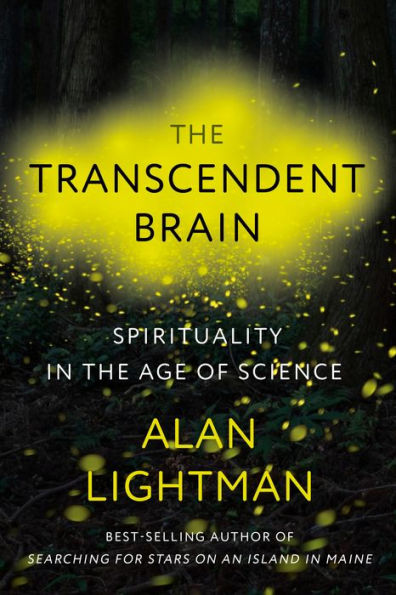Read an Excerpt
1 The Ka and the Ba
A Brief History of the Soul, the Nonmaterial, and the Mind-Body Duality
The man sits at the table, leans toward a friend in the opposite chair. One hand rests on his knee, the other lightly cradles his chin with its short scraggly beard. He wears a red jacket, dark pants, silver-buckled shoes, a white shirt with rued cus. While his friend reaches out with a smile, our man seems lost in some deep inner realm, as if brooding over the vast cosmos of earthly existence and what might come after. His face would be recognized by many in eighteenth-century Europe, from numerous portraits rendered on porcelain teacups, vases and pendants, busts, paintings. His name is Moses Mendelssohn.
This particular painting with the red jacket depicts a meeting between Mendelssohn and two other thinkers: the German writer and philosopher Gotthold Ephraim Lessing and the Swiss poet and theologian Johann Kaspar Lavater. The latter once described Mendelssohn as “a companionable, brilliant soul, with piercing eyes, the body of an Aesop— a man of keen insight, exquisite taste and wide erudition . . . frank and open- hearted.”
Let’s describe the scene a bit more. Judging from Mendelssohn’s visage, he is about fifty years old, making the year about 1779. A chessboard rests on the table. Above it hangs a brass fixture, whose top section is a chandelier and lower part an oil lamp used for the Sabbath and other Jewish holidays. Mendelssohn is the most famous Jew of his generation. Although deeply religious, he has crossed the border from Jew to Gentile. Breaking from a prescribed life of studying the Talmud and Torah in Hebrew, Mendelssohn has mastered the German language, more adeptly than the Prussian king Frederick the Great, and writes his many philosophical works in that tongue. Against the back wall of the room is a shelf filled with books. A wood floor. A beamed ceiling. A richly embroidered green cloth on the table. A woman enters the room carrying a tray with teacups. This is Mendelssohn’s home, on 68 Spandau Street in Berlin. It is a prosperous house. After beginning life as the son of a poor Torah scribe and living for years as a lowly clerk in a silk factory, Mendelssohn has become part owner of the factory.
I start with Mendelssohn because no other philosopher or theologian in the history of recorded thought has argued so rationally for the existence of the soul, the prime example, after God, of the nonmaterial. Aristotle claimed that the soul could not exist without a body. Augustine attributed all aspects of the soul to the perfection of God, Augustine’s starting point in all things. Maimonides assumed the existence of the soul, which would become immortal for the virtuous (but not for the sinners). Mendelssohn made none of these assumptions. Coming of age after the scientific revolution of Galileo and Newton, Mendelssohn started from scratch. He constructed logical arguments for the existence of the soul and its immortality. He thought like a scientist as well as a philosopher. In 1763, he won the prize oered by the Prussian Royal Academy of Science for an essay on the application of mathematical proofs to metaphysics, beating out such people as Immanuel Kant. In his salon, a portrait of Isaac Newton hung next to the portraits of the Greek philosophers.
Mendelssohn was a polymath. As a boy, he studied astronomy, mathematics, philosophy. He wrote poetry. He played the piano (studying with a student of J. S. Bach). At the age of sixteen, he began learning Latin, so that he could read Cicero and a Latin version of John Locke’s Essay Concerning Human Understanding. Aaron Gumperz, the first Prussian Jew to become a medical doctor, taught Mendelssohn French and English. In his twenties, Mendelssohn joined the German writer and bookseller Christoph Friedrich Nicolai to publish the literary journals Bibliothek and Literaturbriefe. Not content with five languages under his belt, Mendelssohn then learned Greek, so that he could read Homer and Plato in the original.
In 1767, Mendelssohn wrote his masterwork, Phädon, or On the Immortality of the Soul, a reconception of Plato’s famous Phaedo. In doing so, Mendelssohn wanted to do for the modern European world what Plato had done for the ancient Greek world— describe the necessity and nature of the soul. “I . . . tried to adapt the metaphysical proofs to the taste of our time,” Mendelssohn modestly wrote in the preface to his book. But he did more than adapt. He presented new arguments. He reasoned that while the body and all experiences of the body are composed of parts, to arrive at meaning there must be a thinking thing outside of the parts to integrate and lead their individual sensations, just as a conductor is needed to lead a symphony orchestra.
Furthermore, this thinking thing beyond the body must be a whole. If it were composed of parts, then there would need to be another thing outside of it, which composed and integrated its parts, and so on, ad infinitum. “There is, therefore . . . at least one single substance, which is not extended, not compound, but is simple, has a power of intellect, and unites all our concepts, desires, and inclinations in itself. What hinders us from calling this substance our soul?” And, the Jewish scholar argued, the soul must be immortal, because nature always proceeds in gradual steps. Nothing in the natural world leaps from existence to nothingness.








